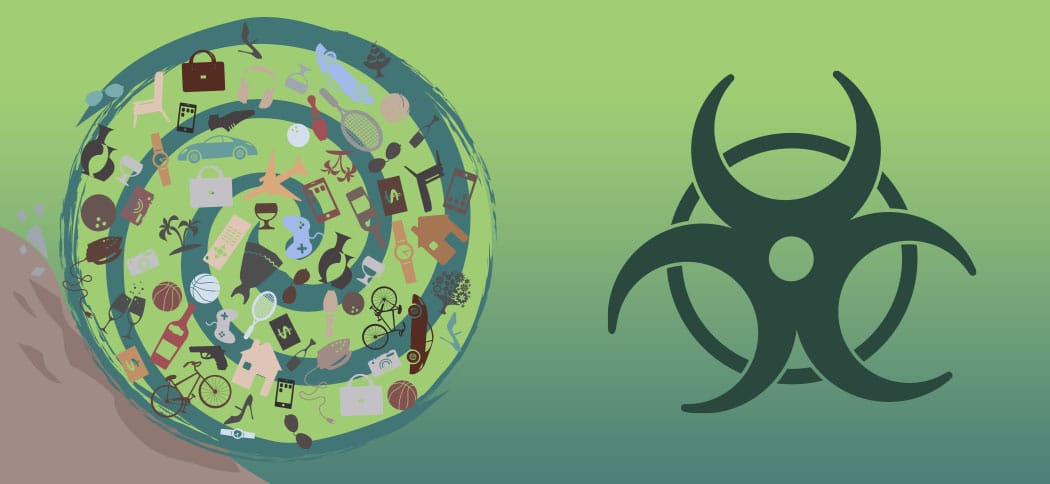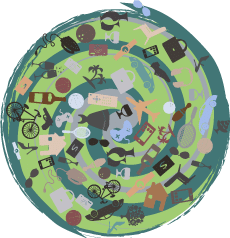Key-Points
How Compulsive Shopping Relates to Hoarding
Dangers of Food Hoarding
Diogenes Syndrome
Paper Hoarding
Animal Hoarding: How Much is too Much?
The term “hoarding” is loosely used to describe a variety of situations and circumstances, but did you know there are several official types of hoarding behavior? The purpose of this article is to clear the confusion on the subtypes by offering information on ones you may know to the ones you least suspect.
There are several subtypes of compulsive hoarding, including:
- Shopping
- Food
- Garbage and trash
- Paper
- Animal
Compulsive Shopping and Hoarding
Chronic shoppers can be considered hoarders by their shopping habits. If someone is suffering from this type of hoarding they’ll shop excessively, collecting items to achieve an adrenaline rush. They’ll refuse to discard their purchased items under distress that they’ll need them. This behavior continues despite their attempts to stop.
Mass Hoarding in the Pandemic
This is not the same type of hoarding that has been seen throughout the 2020 pandemic. The mass panic purchases during the public health crisis created a domino effect, but overall it is temporary. The majority of these individuals can discard these items without severe psychological distress.
Food Hoarding
This behavior is usually found in combination with mental health issues like eating disorders. In humans, this subtype is usually discovered with stolen or hidden food, secretive night eating, or binge eating during the day.
Finding food hoards in areas other than the kitchen is a sign of compulsive food seeking and hoarding. Unfortunately, this subtype is one of the most dangerous because as food accumulates it attracts pests and spoils.
Diogenes Syndrome: The Garbage and Trash Hoarding Disorder
Diogenes Syndrome is synonymous to garbage hoarding disorder, and this condition is exactly what that name implies. Most develop this condition from self neglect issues later in life, but some cases actively think collecting garbage is priceless.
If your tenant or family member is raiding public garbage to collect trash, it’s possible that they suffer from this condition.
Why Do People Hoard Garbage?
The answer is really complex, especially since the value someone places on the junk can vary from raised anxiety levels to disorganized obsessions. In general, however, we can safely assume that it’s because the person has difficulty assigning proper value to the item in question.
Paper Hoarding
Please note we are NOT referring to toilet paper hoarding during the COVID-19 pandemic. Instead, paper hoarding disorder refers to the impulsive tendency to quietly collect clutters of magazines, newspapers, and mail.
When is it Considered "Animal Hoarding"?
If you’re an animal lover with a tendency to keep many pets, you’ve probably wondered, “how many animals is considered too much?” The answer varies greatly depending on the laws in each state, and also how the problem is identified.
Most cases are declared when the individual or tenant has more pets than they can care for. This could either be the amount of physical space they have to care for each pet, or the resources available to take care of them. This leads to another dangerous type of hoarding, as having an unmanageable amount of pets leads to uncontrolled pet urine, feces and other biohazards. These situations attract harmful pathogens, bacteria, and disease.
Why do people hoard animals?
It’s often a tendency of those suffering from depression, anxiety, or complex emotional trauma (e.g. from the loss of a close loved one). Having pet companions is an excellent source of physical and emotional comfort, but in excess it’s a sign of a deeper issue.
When intervention is necessary
A common concern we see is that having a small, messy stack of possessions, or a cluttered home, is a sign of hoarding. And for recovering hoarders, the distinction between having many possessions and a relapse is not always so simple. We recommend using our hoarding help guide if you’re looking for this information.
Discrete 24/7 Assistance
If you believe your situation is a higher level of severity, or has the presence of biohazards, we encourage you to call us right away. We’re here 24/7 and all calls are handled discreetly, with full respect to your privacy.
Share this Post

